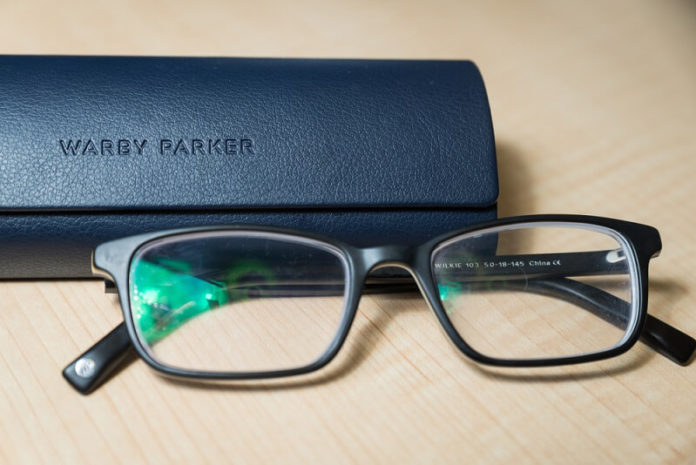Of all the shocking realizations of the past year, there was one that shouldn’t have taken my digital agency by surprise: The number of companies that found themselves unprepared to do business online. We encountered a number of new clients who were struggling with “digital transformation,” ranging from providing personal service that was no longer in person to simply setting up online ordering. With most states advising customers and clients to stay at home as much as possible, many are still finding it tough to translate their physical offerings to the virtual world. Luckily there are some excellent examples of brands doing just that, and a couple tips we think might help your business cross the digital divide.
Big Businesses Made Quick Pivots
There’s a variety of brands providing a rich digital experience to their customers with minimal footprints on the ground.
- Warby Parker–The optical brand gained popularity not just for its flashy but affordable frames and specs, it also provided a fun way for customers to try their product without stepping foot in a store. The brand not only sent customers actual frames to try on and send back, they also created an app where users can digitally try on glasses. It’s not perfect but it’s fun, unique, and enough to get people to the website just for the experience.
- MAC Cosmetics–The international makeup brand had already started using virtual try-on mirrors in its stores before the pandemic hit, but has increased them since the breakout of Covid-19. The brand also offers a similar service to Warby Parker, allowing customers to upload a photo of themselves and virtually “try on” various shades of makeup.
- The Sommelier Company did almost 100% of its business in person, hosting wine tastings for everything from family reunions to corporate events. The brand has since gone virtual, offering Zoom-based wine tastings, delivering the selected bottles to the client within ten days of placing the order. A certified sommelier then guides the customers through an experience similar to an in-person event.
- Billion Oyster Project–The NYC-based non-profit holds a gala each year with no expenses spared. This year, the event went online and each attendee was shipped wine and oysters to enjoy at home. Various breakout rooms hosted by Zoom guided guests through wine tastings, shucking tutorials, and more.
- Big Banking–With countless branches closed to the public, banks around the country have been forced to increase their offerings of digital services. Advancements in AI and virtual banking that would have taken a decade now will take half that. Touchless payments has increased at ATMs and stores as well as a result of the pandemic.
- She Runs It–Formerly known as Advertising Women of New York, this NYC-based non-profit has been hosting live events for 107 years, complete with networking sessions, notable speakers, and corporate sponsors. They have since shifted all of their events online, still committed to providing a top experience for attendees. The change has allowed She Runs It to reach a much wider audience, and now many global brands are offering their employees membership to the organization as a benefit.
How to Go From In Line to Online
You can see from the examples there are various ways to get consumers engaged with your brand in new and exciting ways. We’ve got a few tips of our own to help you and your team embrace the new normal.
- Deliver In Digital – Like Warby Parker and MAC, try to provide an in-store experience over the internet. Think about virtual assistants, shipping samples, or even creating an engaging app. Make something new that tells your customers you are evolving with the times.
- Expand Your Services – With interactions and sales moving online, this is a great opportunity to grow your market. From finance to food services, brands all over the country can reach people in every state, so allow your marketing and outreach to reflect that. It might be a good time to double down on a national CRM campaign or update the wording on your website.
- Produce Live Events – The bar for live event production has been drastically lowered, allowing most people with a ring light and a microphone to create digital content. Explain your brand, introduce the staff, and show how your operation works. It can be a series of connected videos you post on YouTube or just going live on one of your social media channels.
- The Golden Age of Video Chatting – What used to require a 24 hour trip to LA now takes a simple click of the mouse. Video conferences are the new normal and don’t have to be all business all the time. The casual approach to FaceTiming or hopping on a Zoom call has actually brought people closer together, because everyone is dealing with the same issues of lockdown and travel restrictions. And this isn’t temporary. Many major businesses plan to leave a portion of their workforce remote, permanently.
There’s never been a better time to push the edge on creativity and digital transformation. Looking to others who have done it right and seeing what your own needs is a great place to start for reaching your customers online.
Since founding FATFREE in 2005, Mike Metz has developed a talented team of innovators that guide clients in deploying digital strategies that have a meaningful impact on business.
Working with clients in multiple sectors, particularly highly complex and regulated industries, has given FATFREE the opportunity to explore a full range of digital channels, from websites and ecommerce to social media and CX, often pushing the boundaries of what our clients expect and what the technology can do.
Warby Parker stock photo by Dev Chatterjee/Shutterstock







